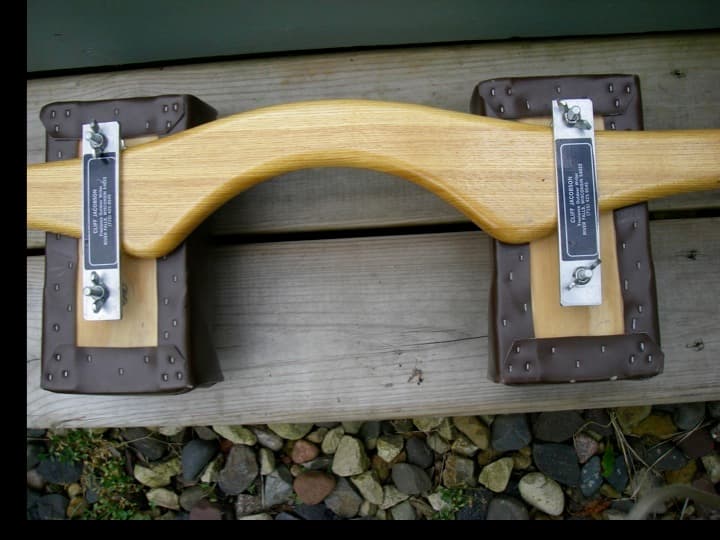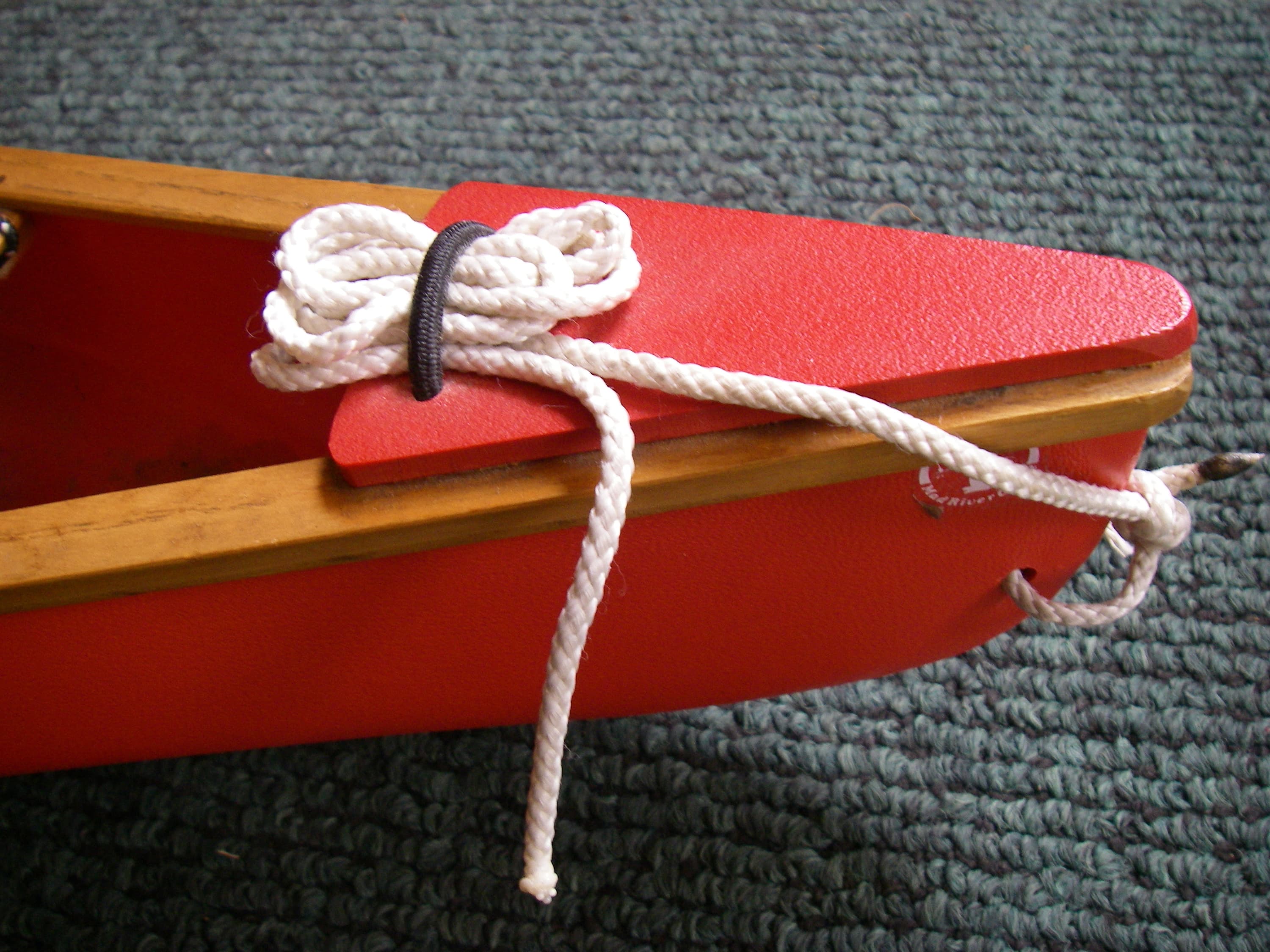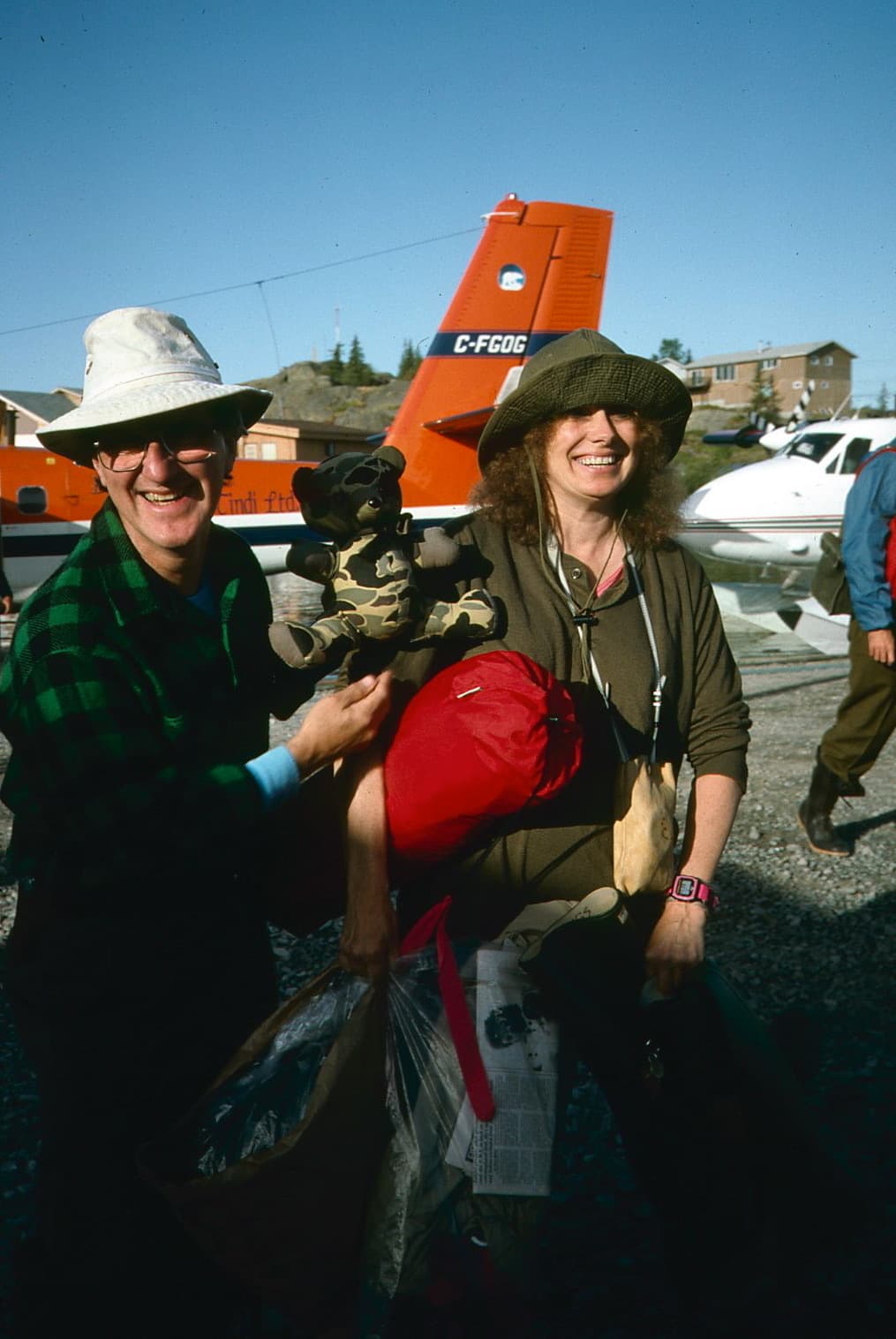Tips for Canoeing the BWCAW

In his book, CAMPING AND WOODCRAFT (1906), Horace Kephart wrote, “I go to the woods to smooth the way; things are rough enough at home!” Here are some expedition-proven tips that will “smooth the rough” out of your Boundary Waters adventures.
1. Equip your canoe with a yoke that fits YOU!
Yoke pads are usually bolted in place and spaced to fit the widest shoulders. Those with narrow shoulders (women and teens) suffer. Shoulder pads that can be moved to fit wide or narrow shoulders fits all. Superior Portage Pads fit any yoke bar and are completely adjustable

2. A large sponge
A large sponge and plastic bailer are essential on river trips. In the BWCA, a sponge is enough. Uses: dry the inside of your canoe, clean muddy boots and gear. Secure your sponge between two loops of shock cord around a seat frame.

3. Lines
Canoes should be tied up (to one another or a tree) in camp, not just turned belly up as is SOP for most BW paddlers. Those who disagree have never had to chase a canoe that blew out to sea in a storm. Twenty-five foot (or longer) lines are standard on wilderness river trips; 15-footers are long enough for the BW. Safety demands that ropes be coiled and secured so they won’t stream out in a capsize or when portaging. Stuffed under a shock-cord loop on deck is most popular. Small streams that are normally portaged can often be lined around obstacles IF your canoe is equipped with ropes at each end.

4. Navigation
Know how to use an Orienteering style compass with built-in protractor to determine bearings from your map. Relying on GPS navigation is seriously diminished by the tiny GPS screen. A GPS is much more useful if your map has uniformly spaced UTM coordinates. GPS users will find the #752-753 National Geographic two map series most useful.
5. Firewood
On most Boundary Waters campsites, all the good firewood has been picked over. If wood is wet from rain, you will have to cut and split logs to get at the dry heartwood. For this, you’ll need a full-frame folding saw and a hand ax. A fixed-blade knife beats a folder because it won’t close on your hand when you pound the spine with a heavy stick to split kindling.
6. Bring light wool long underwear on EVERY trip
Expect snow in June or September; icy rain and temperatures in the 40’s are possible all through the summer. Omitting long johns is a top mistake that newbies make. PS. Kids need longies too. No chilling cotton, please!
7. A waterproof case for your map!
Boundary Waters Area maps are reasonably waterproof. But laid open on a pack, they can fly away with the wind. Folded in your pocket will get you lost. Tether your map case to the canoe when paddling. Shove it under a pack flap, tie it to a pack, or hang it from your neck when you portage. And…bring an extra map. ALWAYS!
8. Wear your PFD at all times while canoeing
Only about half of the people who canoe the BW wear life jackets. The thinking is they can swim, so no big deal. It IS if their canoe capsizes far from shore and the wind blows it (or their children) out-of-reach. This scenario kills someone nearly every year in the BWCA. There’s a saying: Canoeists always wear their life jackets; canoers never do!
9. Storms
Use a plastic groundcloth INSIDE your tent, NOT under the floor as recommended by "experts" who haven’t camped on the rocky Canadian shield where thin soil cover causes rain to pool. Make the groundcloth a foot larger than the tent floor all around so that any water that seeps into your tent will be trapped under the plastic. This is the best wet-weather tip in my wardrobe of skills. I have hammered on this for decades in my talks and books.
10. Judgement
If you want to develop good judgment (and have more fun!) don't blindly take every marked portage. First, check the stream that the trail bypasses. It may be canoeable or lineable. You won't know if you don't look. And by looking, you'll learn what is doable and what isn’t. Lining canoes along the edge of rapids is a daily routine on wilderness rivers. You can learn the basics of this on the small streams of the BWCA IF your canoe is equipped with lines.
11. Bring a nylon tarp for rain.
Rig it every night even if the weather looks good. Then, if you awaken to rain, you'll have a dry place to cook and relax. A second tarp of similar size can be overlapped for more protection and interior space. You’re smart to bring a collapsible pole or two for sites that don't have "properly spaced" trees.
12. Fire-making
Fire-making will be easier if you bring a stainless-steel Littlbug® stove. This simple, ultralight wood-burning stove is remarkably efficient, even with damp wood. It accepts wrist-thick logs and takes up almost no pack space. It’s legal in the BWCA if you set it next to the grill or on top of it. An armful of wood will burn brightly for hours. I might add that if you canoe western rivers where heavy fire-pans are required a Littlbug® stove and high-sided baking pan, will meet federal fire-pan requirements.
13. Pack in odd units--three or five packs, not two or four.
This way, each partner will make two trips over the portage. Carry the canoe LAST. Why? Because if you have a canoe overhead and lose the trail or encounter an obstacle you can't walk around you'll have to drop the canoe to proceed. Those who routinely paddle off the beaten track ALWAYS carry their canoe last.
14. Waterproof your gear
Packs have been dunked when loading and unloading canoes, and a capsize is always possible. Best to use expedition-proven procedures to waterproof your gear. A single plastic pack liner isn't enough! My books, BOUNDARY WATERS CANOE CAMPING, 3rd Edition and CANOEING WILD RIVERS, 5th Edition detail procedures.
15. Bring 150 feet of brightly-colored parachute cord
Bring 150 feet of brightly-colored parachute cord (cut into 10-20 foot lengths/individually coiled) and 4-6 more stakes than your tent normally needs. Use the cord and extra stakes to stormproof your camp when the wind blows up. Learn to tie slippery (quick-release) knots so you can de-rig your cords with a single pull.
16. Quartering
Most canoeing books (not mine!) suggest you angle about 30 degrees into oncoming waves to give the canoe more lift. But quartering into a wind that is trying to twist you around requires team coordination. Without it, you will broach and probably capsize. Beginners are safer to head directly into the waves.
17. Loading the canoe
The canoeing literature is rich with advice on how to load the canoe for various wind conditions--namely, bow down in a head-wind, stern down in a tail wind. But unless the wind is steady and you have a long ways to go, any trim other than dead-level is a handicap.
18. A "multi-pliers"
A "multi-pliers" is useful for moving burning firewood, picking non-burnable trash from your cold fire-site; lifting a hot pot and tightening a pesky zipper slider.
19. Lightning
The common advice is to put ashore at the first hint of lightning. This can be difficult because the powerful storm-driven waves may surf you into a rocky shore. Lightning generally strikes the tallest obstacle; in the BWCA that’s often sun-loving trees near shore. Shelter under them and you may be toast!. A cone-of-protection extends roughly 30 degrees from the tallest shoreline tree out to the water. Lightning can jump 50 feet or more, so best stay within this protective cone but not so close to shore that lightning can jump to you.
20. Bring something that makes you smile
“Bear Bear”, a cuddly soft Teddy Bear accompanies us on every trip.

Related Articles
I wasn't sure what travel was going to look like this winter, if there would be any travel at all.…
View all Canoeing Locations in The Everglades ► ► All of our Everglade paddling locations are from…
We've had conversations about my neck surgery. More slicings are probably on the distant horizon, but…
When a reader asked me to share my favorite places to canoe, I balked. After all, one person's treasure…



